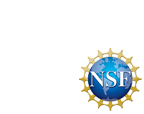
“The Art of Science Learning” responds to the increasing demand for a workforce that is skilled in creative, interdisciplinary and collaborative approaches to innovation, as well as one that is scientifically and mathematically literate.
In recent years, a large number of business leaders have identified a significant “innovation gap” around workforce preparedness in the realms of creativity, collaboration and communication, areas they consider critical to their own companies’ competitiveness
1. Renewed attention is focused on the nature of creativity and the conditions under which it can flourish.
2The lesson of current investigations is that creativity is not the special talent of a few, but a quality that can be nourished and encouraged in us all. Increasingly it is understood that one learns through the hand as well as through the mind and that hands-on experience is an essential element in developing the creative imagination.
Recognizing the profound implications for America’s future position in the global economy of what Qualcomm co-founder Harvey White has called “the innovation gap”, business leaders are increasingly seeking solutions in domains beyond the traditional boundaries of the business world; with renewed attention being focused on the nature of creativity and the conditions under which it can flourish. A growing number of companies – including more than four hundred of the current Fortune 500 – have turned to arts-based learning, successfully using artistic skills, processes and experiences as organizational resources to strengthen innovation processes and foster creative thinking.
3Empirical investigations into how arts-based learning can promote leadership skills are also being undertaken. Jen Katz-Buonincontro, for example, has examined how executive leadership programs have been successfully using the arts, from improvisational theatre to ceramics in enhancing creative leadership skills.
4Companies are discovering how to use artistic resources as learning tools to enhance employee skills in critical areas such as collaboration, change management and intercultural communication.
At the same time, growing numbers of science centers, museums and innovative educators across the country have successfully integrated the arts into informal science education programs as teaching tools, and the value of arts-based approaches to the promotion of scientific literacy has gained broad acceptance.
Art of Science Learning builds on these successful bodies of experience, and is designed to promote the use of arts-based leaning in informal science education by catalyzing a community of professional interest and practice, and creating new tools and resources to strengthen the capacity of science educators to integrate arts-based approaches to science learning.
The thoughtful integration of such a creative, experientially-based, interdisciplinary approach into science education has the potential to make the study of science more attractive and inspiring to students, enhance the scientific literacy of the American people, and ensure a higher level of creativity and innovation across the 21st-century American workforce.


